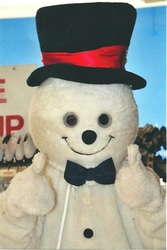Coming Events Skating Calendar 2019-2020
______________________________________________________________________________________________
Watch this space for new calendar events
______________________________________________________________________________________________
Watch this space for new calendar events

What happened on this day?
Thursday Feb 6th, 2014 at 5:00pm
Megan Reuther from WHO TV 13, aired an interview from The Ice Ridge, on the Olympics, our Olympic party, The Ice Ridge learn to skate program and home schoolers that enjoy our facility.
If you missed it, you can watch it here:
http://whotv.com/2014/02/06/olympic-spirit-party-to-support-team-usa/
Thursday Feb 6th, 2014 at 5:00pm
Megan Reuther from WHO TV 13, aired an interview from The Ice Ridge, on the Olympics, our Olympic party, The Ice Ridge learn to skate program and home schoolers that enjoy our facility.
If you missed it, you can watch it here:
http://whotv.com/2014/02/06/olympic-spirit-party-to-support-team-usa/
Olympic History - Figure Skating
Figure skating is the oldest discipline in the Olympic Winter
Games. As far back as 1908, figure skating competitions were included
in the Olympics in London, and in 1920 at the Antwerp Games.
Since the 1924 Olympic Games in Paris, singles and pairs skating have been
a key fixture of the Olympic Games.
In 1976 ice dancing was included in the Olympic program; prior
to this (in 1972) it was the only part of the Olympics
as a demonstration sport.
Today, figure skating is one of the most popular sports in the world.
Figure Skating today
The Olympic Games program includes the following figure skating competitions:
individual men’s and women’s events, pairs events, ice dancing and also team
events. At the present time, only 5 sets of medals are contested
in the Olympic figure skating program.
Single skating (Men and Ladies) consists
of a short program including 7 compulsory elements and
a free program. A well-balanced free program should include jumps,
spins, and steps.
Likewise, mixed pairs skaters first perform a short
program (7 moves) and then a free program. Compulsory moves include
lifts, spirals, throws and synchronized jumps.
One of the most significant criteria in the judging
of programs is the degree to which a pairs’ movements mirror
one another.
Ice Dancing is the only discipline that allows the use
of music with vocals. Dancers much adhere closely to the rhythm
of the music and express the character of the music with appropriate
emotion and feeling.
At present, ice dancing competitions, like those
of other forms of figure skating, consist of two programs. The
short program combines a compulsory dance—consisting of one
or two parts—and certain proscribed elements. The theme and rhythm
of the musical accompaniment is determined each season by the ISU
the sport’s governing body, while the length of this dance—currently
2 minutes and 50 seconds—is similar to requirements of other
forms of figure skating. The free dance has not undergone significant
changes over the years and the basis of its scoring remains, the quality
of the compulsory elements in close dancing positions, the unison the
skaters display and their ability to express the character of the
musical selection.
Team Events in figure skating are a competition
between the best national teams. Representatives of the singles and pairs
skating perform a short and free program; in ice dancing they complete
a short and free dance. Each team may have one sports pair and one dance
pair, one male figure skater and one female figure skating.
Equipment
Figure skating is the oldest discipline in the Olympic Winter
Games. As far back as 1908, figure skating competitions were included
in the Olympics in London, and in 1920 at the Antwerp Games.
Since the 1924 Olympic Games in Paris, singles and pairs skating have been
a key fixture of the Olympic Games.
In 1976 ice dancing was included in the Olympic program; prior
to this (in 1972) it was the only part of the Olympics
as a demonstration sport.
Today, figure skating is one of the most popular sports in the world.
Figure Skating today
The Olympic Games program includes the following figure skating competitions:
individual men’s and women’s events, pairs events, ice dancing and also team
events. At the present time, only 5 sets of medals are contested
in the Olympic figure skating program.
Single skating (Men and Ladies) consists
of a short program including 7 compulsory elements and
a free program. A well-balanced free program should include jumps,
spins, and steps.
Likewise, mixed pairs skaters first perform a short
program (7 moves) and then a free program. Compulsory moves include
lifts, spirals, throws and synchronized jumps.
One of the most significant criteria in the judging
of programs is the degree to which a pairs’ movements mirror
one another.
Ice Dancing is the only discipline that allows the use
of music with vocals. Dancers much adhere closely to the rhythm
of the music and express the character of the music with appropriate
emotion and feeling.
At present, ice dancing competitions, like those
of other forms of figure skating, consist of two programs. The
short program combines a compulsory dance—consisting of one
or two parts—and certain proscribed elements. The theme and rhythm
of the musical accompaniment is determined each season by the ISU
the sport’s governing body, while the length of this dance—currently
2 minutes and 50 seconds—is similar to requirements of other
forms of figure skating. The free dance has not undergone significant
changes over the years and the basis of its scoring remains, the quality
of the compulsory elements in close dancing positions, the unison the
skaters display and their ability to express the character of the
musical selection.
Team Events in figure skating are a competition
between the best national teams. Representatives of the singles and pairs
skating perform a short and free program; in ice dancing they complete
a short and free dance. Each team may have one sports pair and one dance
pair, one male figure skater and one female figure skating.
Equipment
- Custom-made boots made of thick, stiff leather, with extra laces and
wide tongues, which provide the ankle with both flexibility and support usually
made to the individual order for the skater. - High strength carbon-steel blades with concave grooves along their entire
length and teeth in the toe of the blade to allow for pushing off
when executing certain types of jumps. - A suit made of stretchable material that does not restrict the
skater’s range of movement. The outfit should correspond to the
character of the musical selection and reflect the theme of the
program. - A standard skating rink is 30 by 60 meters
in size, with plastic or sliding boards. Figure skaters need ice
of the highest quality which is achieved using ice resurfacing
machines. The thickness of the ice over its entire surface should not vary
by more than 0.5 cm.




